The Physics Of Santa Claus
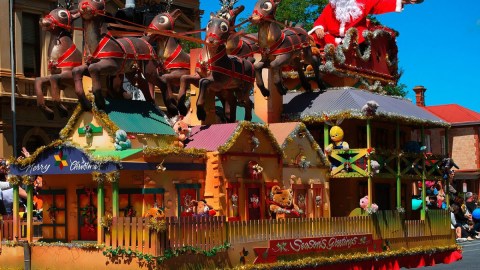
How does he deliver presents to hundreds of millions of households in just one night? With physics, of course!
“Our family was too strange and weird for even Santa Claus to come visit… Santa, who was jolly — but, let’s face it, he was also very judgmental.”
–Julia Sweeney
It seems like an impossible task, doesn’t it? From the first nightfall on Christmas eve until dawn on Christmas morning, one stout and elderly man, armed only with a magic sleigh and eight flying reindeer, must deliver toys to children in every household in the world… that believes in him. With the population having recently passed seven billion, is this physically possible?
To find out, let’s start with the right conditions. Admittedly, Santa has a tall order ahead of him:
- According to Wikipedia and extrapolating for population growth since the date of the survey, there are approximately 1.6 billion households worldwide.
- Since the Earth has about 25 million square miles (65 million square kilometers) of habitable land, the average distance between any two households is approximately 0.138 miles (0.225 km).
- And, at least in the United States, Santa visits 31% of households in any given year. (Pretends to? Really, PEW?)
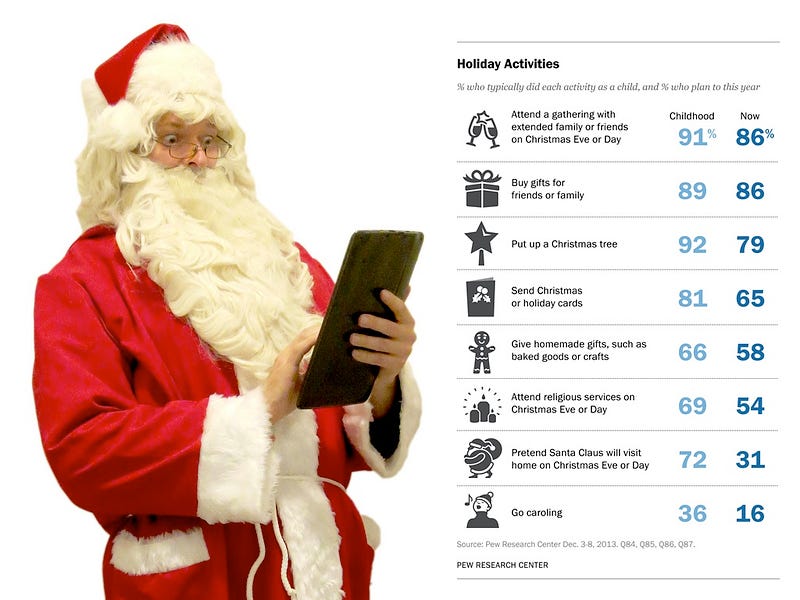
So what this means, altogether, is that Santa has from the first sundown on Christmas eve until just before dawn in the last house to experience Christmas morning to deliver presents to right around 500 million households. Due to timezones, the international date line and the variations in sunset/sunrise times, this means Santa has about 31 hours to hit those half-a-billion households. In that time, he must do the following:
- travel to the house, a mean distance of 0.205 miles (0.33 kilometers) from the last house,
- depart his sleigh and enter the house undetected,
- deliver all the presents,
- eat any snacks left for him (cookies and beer at my place),
- and then leave the house undetected, mount the sleigh and head for the next house.
To accomplish all of those tasks seems to be asking for a lot, as many parents could tell you.
But for Santa, he’s only got 223 microseconds on average to hit each house! Sound impossible? Maybe for a normal human with conventional technology, sure. But I have faith in Santa, and so should you. Let’s take a look at each of the objections you may have.
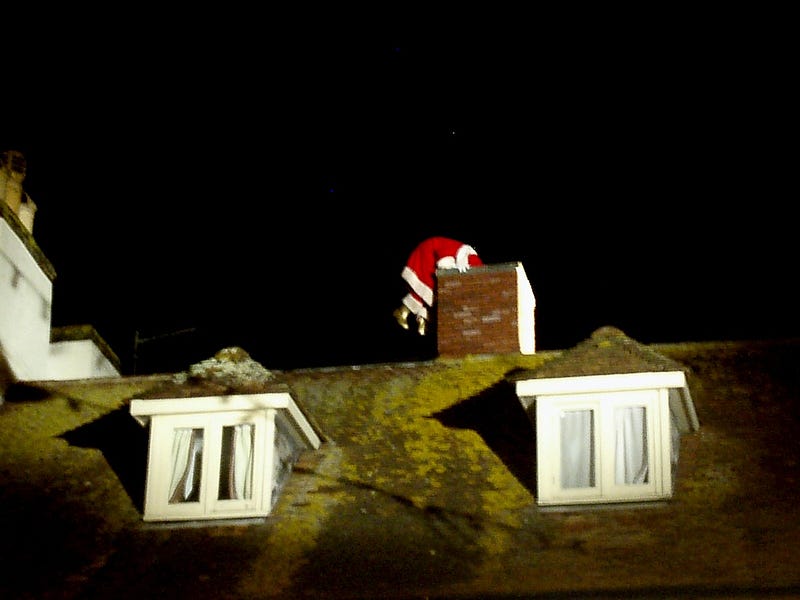
1.) There’s no way Santa could travel to each house that quickly. This actually isn’t all that fast. At least, not compared to relativity and the speed of light. To move the mean distance from house-to-house, Santa need only travel at — assuming he takes roughly 50% of the time allotted to travel — around 6400 miles-per-hour (10,000 kph). Sure, that might seem awfully fast compared to your typical sleigh, or even your typical car, train or supersonic aircraft. But that’s only about a quarter as fast as most rockets wind up going. If you fuel up those reindeer right, there’s no reason to believe Santa can’t make that journey.
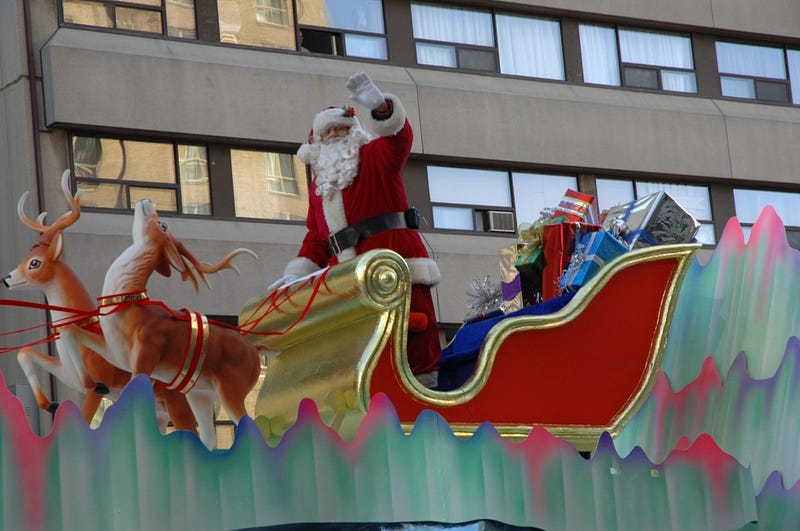
2.) There’s no way an open sleigh — and a Santa within — could handle the heat or acceleration generated. First, there’s the heat objection. Moving at those intense speeds, the frictional forces of the atmosphere alone could be a disaster; the only thing we’re familiar with that collides with the atmosphere at those speed are meteors, and satellites that re-enter the atmosphere. Santa would need to dissipate somewhere on the order of a few trillion Joules of heat each second of travel, a tremendous amount. But there are two ways out:
- He could have a heat shield protecting both the reindeer and himself, allowing him to travel freely. This is a problem, however, if we’re considering an opensleigh. But the second option might not be such a problem…
- He could have such an aerodynamically advanced vehicle that the air in front of him is mostly evacuated, leaving only a smooth breeze. Give Santa a little bit of oxygen, and he’s good to go.
The accelerations are a little rougher, mind you. Going from 0-to-60 mph in a tenth of a second is a disaster for most people; you’d pass out (or worse) from the acceleration. So going from 0-to-6,000 seems like it’d be out of the question! Even if we remember that most of the world lives concentrated in urban areas, the short journey from rooftop-to-rooftop would be catastrophic at these speeds. The record for human endurance over short times is 83g’s, my Major John Beeding on a rocket sled. The idea that humans could take these incredible accelerations/decelerations was pioneered by John Stapp, who tested his devices on himself in the 1940s and 1950s.
What Santa needs, quite simply, is a way to keep his blood flowing normally through all of this. A sufficiently pressurized suit, combined with a biological turbine system that’s far more powerful than a human heart could do it. Yes, biological modification isn’t what you think of when you think of Santa, but who among us has ever seen the jolly one with our own eyes to be sure?

3.) How could Santa get into all those houses so quietly, and never leave footprints? Stealthy isn’t exactly the picture you have in mind when you think of an overweight, elderly man traveling all over the world and wearing boots. Yet if Santa can land, there’s no reason he couldn’t be placed into the house from outside, via a mechanical rig attached to the sleigh. Whether through a door, window, chimney or other device, a robotic arm with Santa-capacity could easily handle this. This is a tall order for any human, so there’s no reason to believe Santa hasn’t instituted a bit of technological Christmas magic.
What, and you though elves were only good for making toys?
4.) How could he deliver the presents so fast? If he had to do it all by hand, I could understand your objections. But if Santa has a robotic arm putting him inside, surely it could help him drop off and deposit presents. Literally a fraction of a second would be all it takes, and then he’d be gone.

5.) What about the eating of the snacks? This actually works out brilliantly. You see, it takes a tremendous amount of energy — and hence, fuel — to drag all of these present all over the world. Sure, magic, flying reindeer could just “take care” of this, but let’s be reasonable for a moment. You see, as far as we can tell, everything must obey the conservation of energy, even Santa Claus. But how much energy does it really take for each of these journeys?
Assuming Santa comes fully laden with all the toys delivered to children across the world, he has somewhere around a million tonnes of toys to deliver, assuming about 4.5 pounds (2 kg) of toys per household. (Think of that the next time you ask Santa for a pony, kids!) This is about four thousand times the payload capacity of the largest aircraft, the Antonov An-225, which transports things like the space shuttle. Rocket fuel is expensive, sure, but it’s also inefficient! Only about 0.001% of the mass in rocket fuel goes into energy; the rest is simply wasted, dead weight. But what if Santa’s reindeer — the power behind Santa Claus — could turn those milk and cookies into energy via Einstein’s E=mc2?
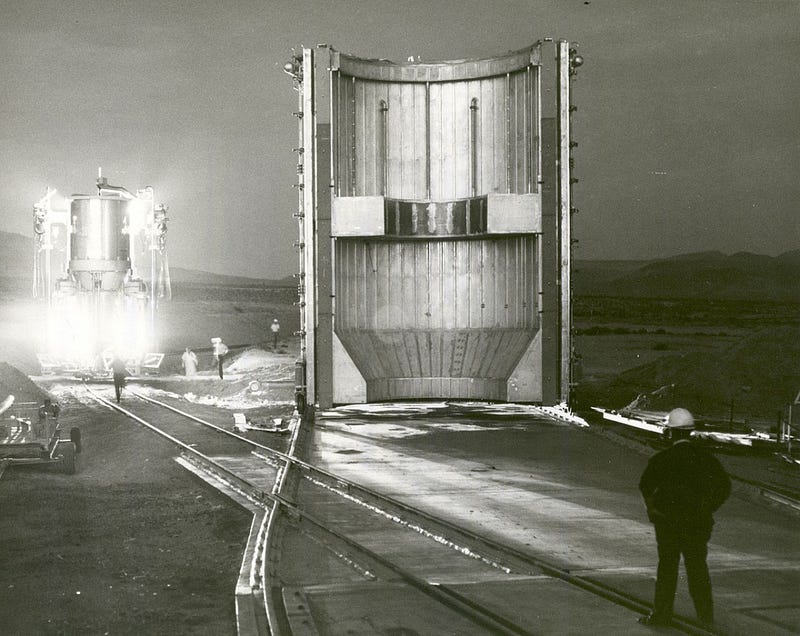
Quite amazingly, the tiny, little amounts of mass in even a single, small cookie could power Santa and all the toys in the world from one house to the next, because E=mc^2 is 100% efficient. The leftovers, of course, are all for Santa.
There are other plausible scenarios to how Santa could deliver all those presents, some of which rely on technology (such as Arthur Christmas), some of which rely on magic, and some of which rely on many, many helpers. But for those of you who doubt it, never forget the most important lesson we learned from Apollo 8, the first crewed spacecraft to leave low-Earth orbit, as the following exchange between Ken Mattingly (on the ground in Houston) and Jim Lovell (aboard Apollo 8) shows:
089:32:50 Mattingly: Apollo 8, Houston. [No answer.]
089:33:38 Mattingly: Apollo 8, Houston.
089:34:16 Lovell: Houston, Apollo 8, over.
089:34:19 Mattingly: Hello, Apollo 8. Loud and clear.
089:34:25 Lovell: Roger. Please be informed there is a Santa Claus.
089:34:31 Mattingly: That’s affirmative. You’re the best ones to know.
Now if only we could answer the greatest of all Christmas mysteries: how does he go to the bathroom?
Leave your comments on our forum, help Starts With A Bang! deliver more rewards on Patreon, and order our first book, Beyond The Galaxy, out now!





